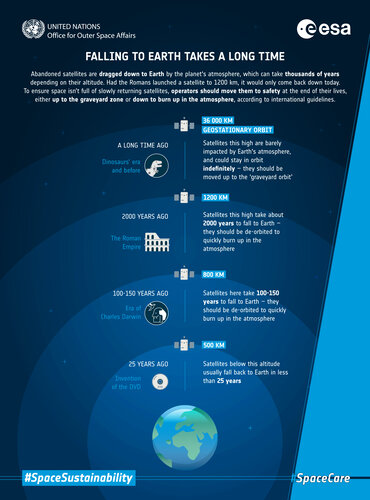Our planet's atmosphere reduces the energy of satellites in orbit (on Earth, this would be like reducing their speed, but in space, it's complex!). This then brings them back down to Earth.
This process can be relatively fast for satellites flying at low altitudes, taking less than 25 years, but for satellites launched into orbits tens of thousands of kilometres away, it can be thousands of years before they return, if the atmosphere is able to impact them at all.
Had the dinosaurs launched a satellite into the furthest geostationary orbit, it would still be up there today.
This means that as we launch satellites to space we must consider how they will be removed at the end of their lives, or else the skies will be filled with old, defunct spacecraft at risk of collision, explosion, and the near-certain creation of vast amounts of space debris.
In this infographic from ESA and UNOOSA, find out how long it would take satellites at different altitudes to naturally fall back to Earth, and what must be done to responsibly dispose of them at the end of their lives.
Find out more in Episode two of the corresponding ESA-UN podcast, "Falling to Earth takes a long time".



 Image:
Satellites and debris take a long time to return
Image:
Satellites and debris take a long time to return